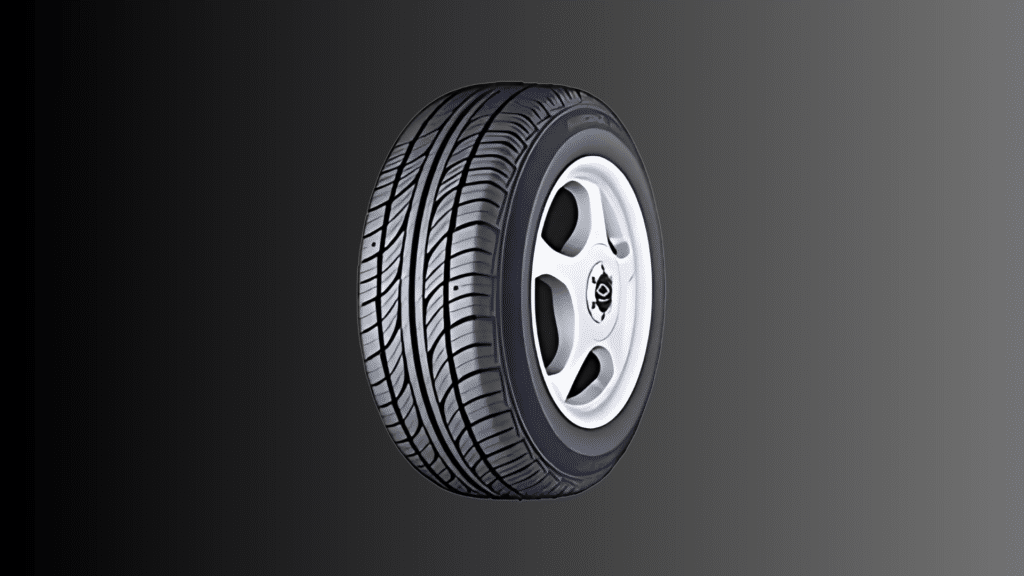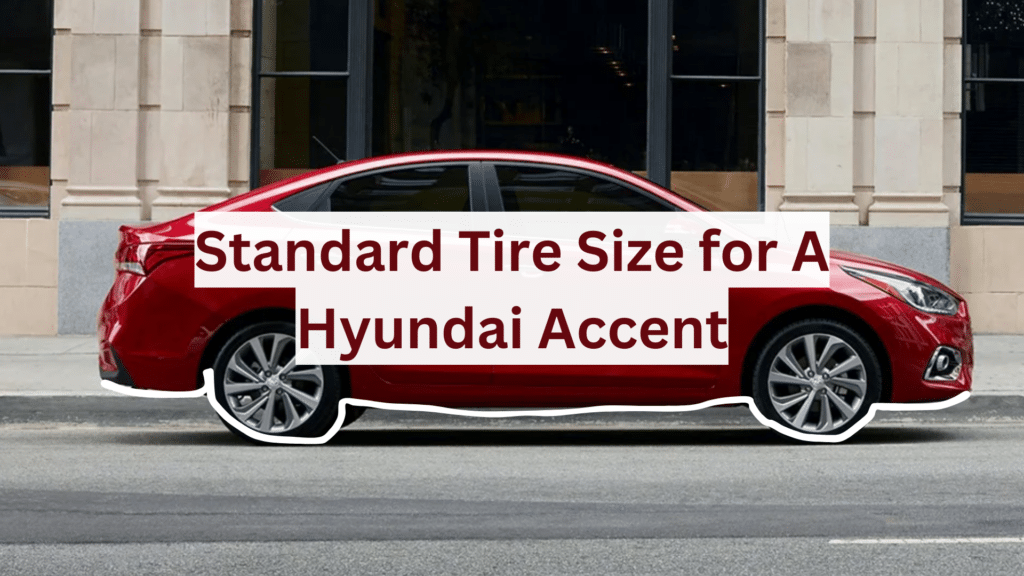Have you ever found yourself standing in a tire shop, scratching your head, and wondering what size tires your Hyundai Accent needs? You’re not alone.
In this article, I’ll walk you through the standard tire sizes for all Hyundai Accent models, from older generations to the latest—no more guesswork or relying on salespeople who might not have your best interests at heart.
As a mechanic with 15+ years of experience working specifically with Hyundai vehicles, I’ve helped hundreds of Accent owners find the right tires. The wrong tire size can affect fuel economy, handling, and safety.
By the end of this guide, you’ll know:
- Your exact tire size based on your Accent’s year
- What those tire size numbers mean
- How to check your current tire size yourself
Let’s get your Accent rolling with the right rubber!
Standard Tire Sizes for Different Model Years

Finding the right tire size for your Hyundai Accent shouldn’t be complicated. I’ve broken it down by model years to make it easy for you.
1. 2018-2023 Models
Common Factory Tire Sizes
- P185/65R15 for base models
- P205/45R17 for higher trim levels
Variations Based on Trim Levels
The SE and SEL trims typically come with 15-inch wheels, while the Limited trim gets the larger 17-inch wheels with the sportier tire profile.
Not sure which trim you have? Check your driver’s side door jamb for a sticker with this information.
2. 2012-2017 Models
Common Factory Tire Sizes
- P175/70R14 for base models
- P195/50R16 for premium trims
Variations Based on Trim Levels
The GLS base model uses the 14-inch setup, while the SE and Sport trims get the upgraded 16-inch wheels and tires.
3. 2006-2011 Models
Common Factory Tire Sizes
- P185/65R14 for most models
Variations Based on Trim Levels
The GLS and SE trims shared the same tire size during these years, with very little variation.
2000-2005 Models
Common Factory Tire Sizes
- P175/70R13 for base models
- P185/60R14 for GT models (2003-2005)
Variations Based on Trim Levels
The GL trim used the 13-inch setup, while the rare GT trim received the sporty 14-inch wheels.
Here’s a quick tip: your current tires have all this information printed on the sidewall! Look for something like “P185/65R15” – that’s your tire size.
Need to replace just one tire? Always match it to your other three. Mixing sizes can damage your car and make it unsafe to drive.
Understanding Tire Size Numbers
Tire sizes might look like a secret code, but they’re easy to understand once you know what each part means.
Let’s break down a typical Accent tire size like P185/65R15:
1. Explanation of Width, Aspect Ratio, and Diameter
- P stands for “Passenger” vehicle. Sometimes you won’t see this letter at all.
- 185 is the tire width in millimeters. This measures from sidewall to sidewall.
- 65 is the aspect ratio. It tells you the tire’s height is 65% of its width. Lower numbers mean shorter sidewalls and usually a sportier feel.
- R means “Radial” construction, which is how most modern tires are built.
- 15 is the wheel diameter in inches. Your rims are this size, so your tires must match.
Sometimes, you’ll see extra letters and numbers after these, like 91H. The number (91) is the load index, showing how much weight the tire can handle. The letter (H) is the speed rating.
2. How Tire Sizes Affect Performance and Comfort
Different tire sizes can dramatically change how your Accent drives:
- Wider tires (higher first number) give you better grip and cornering but may reduce fuel economy and create more road noise.
- A lower aspect ratio (smaller second number) improves handling and responsiveness but results in harsher ride-over bumps.
- A larger diameter (higher last number) typically means better handling but can make your ride feel stiffer.
Going with a tire size that’s too different from the factory recommendation might:
- Rub against your car’s body
- Affect your speedometer readings
- Change how your car handles
- They wear out faster than they should
Always stick to sizes recommended for your Accent model and trim level for the best performance and safety.
Upgrading or Changing Tire Sizes
Are you thinking about switching up your Accent’s tire size? If done correctly, this can be a good move, but there are important things to consider first.
Pros and Cons of Different Tire Sizes
Going Wider
Pros:
- Better grip and traction
- Improved cornering stability
- More aggressive look
Cons:
- Reduced fuel economy
- Increased risk of hydroplaning
- It may require wheel upgrades
Lower Profile (Smaller Aspect Ratio)
Pros:
- Sharper steering response
- Less sidewall flex during turns
- Sportier appearance
Cons:
- Rougher ride quality
- Greater risk of rim damage
- Usually more expensive
Larger Diameter
Pros:
- Enhanced ground clearance
- Better brake cooling
- Modern, upgraded look
Cons:
- Can throw off speedometer readings
- May affect acceleration
- Often requires suspension modifications
How to Choose the Right Alternative Sizes
If you want to change your tire size, follow these guidelines to do it safely:
- Stick to the “Plus Sizing” rule: Increase width and wheel size together while decreasing aspect ratio to maintain the same overall diameter.
- Calculate total diameter: The formula is, Width × (Aspect Ratio ÷ 100) × 2 + (Wheel Diameter × 25.4)
- Stay within 3% of the original: Your new size should exceed 3% of your factory tire’s total diameter.
- Check clearance: Make enough space between the tire and your wheel wells, suspension components, and fenders.
- Consider your driving habits: Avoid very low-profile tires if you often face rough roads or potholes.
Remember: the best alternative sizes for a 2020 Accent with stock P185/65R15 might be P195/60R15 or P205/55R16, keeping the total diameter nearly identical.
Always consult with a tire professional if you’re unsure. The wrong size can affect your car’s safety systems, like ABS and traction control.
Best Tire Options for the Hyundai Accent
Getting the right tires for your Accent isn’t just about size—it’s also about finding the right type for your driving needs and conditions.
Recommendations for All-Season Tires
- Michelin Defender T+H: Great balance of comfort, tread life, and wet performance
- Continental TrueContact Tour: Excellent fuel economy and quiet ride
- Bridgestone Turanza QuietTrack: Reduced road noise and smooth ride
- Kumho Solus TA11: Budget-friendly option with a good all-around performance
Recommendations for Performance Tires
- Michelin Pilot Sport 4: Superior handling and grip for spirited driving
- Continental ExtremeContact Sport: Excellent wet and dry traction
- Firestone Firehawk Indy 500: Great performance at a mid-range price
- Hankook Ventus V2 Concept2: Budget performance option with decent grip
Recommendations for Winter Tires
- Bridgestone Blizzak WS90: Top-tier ice and snow performance
- Michelin X-Ice Snow: Long-lasting with excellent snow traction
- Continental VikingContact 7: Superior handling on both snow and wet roads
- General Altimax Arctic 12: Affordable option with good snow performance
Factors to Consider When Selecting New Tires
1. Your Local Climate: Match your tires to where you live. All seasons work in mild areas, but you’ll need winter tires for heavy snow regions.
2. Driving Style: Do you value comfort over performance? Are you a more aggressive driver? Choose accordingly.
3. Tread Life: Some tires last 40,000 miles while others can go 80,000+. Longer-lasting tires usually cost more upfront.
4. Noise Level: Cheaper tires tend to be louder. If you value a quiet ride, look for tires with noise-reducing features.
5. Fuel Economy: Low rolling resistance tires can improve your Accent’s MPG by 1-2%, which adds up over time.
6. Budget: Quality tires for an Accent typically range from $80-$150 per tire. Remember that the cheapest options often cost more in the long run through reduced fuel economy and shorter lifespans.
I recommend replacing all four tires simultaneously for the best handling and safety, even if only two are worn.
Conclusion
Choosing the right tires for your Hyundai Accent doesn’t have to be complicated.
You’re already ahead of the game by understanding your car’s standard tire size based on its model year and trim level.
Remember that the numbers on your tire sidewall (185/65R15) tell an important story about width, height, and rim size—all factors affecting how your car handles and feels on the road.
Whether you stick with factory specifications or carefully upgrade to a different size, prioritize safety and performance over appearance.
Consider your typical driving conditions, local weather patterns, and personal preferences when selecting all-season, performance, or winter tires.
With the right tires properly installed, your Accent will deliver the reliable, efficient performance it was designed for, keeping you safe and comfortable for thousands of miles.
Frequently Asked Questions
Can I use a different tire size than what came on my Hyundai Accent?
Yes, but stay within 3% of your original tire’s diameter. Going too far from factory specs can affect your speedometer readings, handling, and safety systems.
How often should I replace the tires on my Hyundai Accent?
Most tires should be replaced every 5-6 years or 40,000-60,000 miles, depending on tire quality, driving conditions, and maintenance. Check tread depth regularly—replace when it reaches 4/32″ or less.
Do I need winter tires for my Accent if I live in an area with occasional snow?
Winter tires are worth considering if you experience more than a few days of snow annually. They provide significantly better traction below 45°F, even on dry roads, than all-season tires.
What tire pressure is recommended for a Hyundai Accent?
Most Accent models recommend 32-35 PSI. Check your driver’s door jamb sticker for the exact model year and trim level specifications.
Can upgrading to larger tires improve my Accent’s performance?
Slightly wider tires with lower profile sidewalls can improve handling and cornering grip. However, these improvements come with ride comfort, fuel economy, and cost trade-offs. Sticking close to factory specs offers the best overall experience for most daily drivers.


